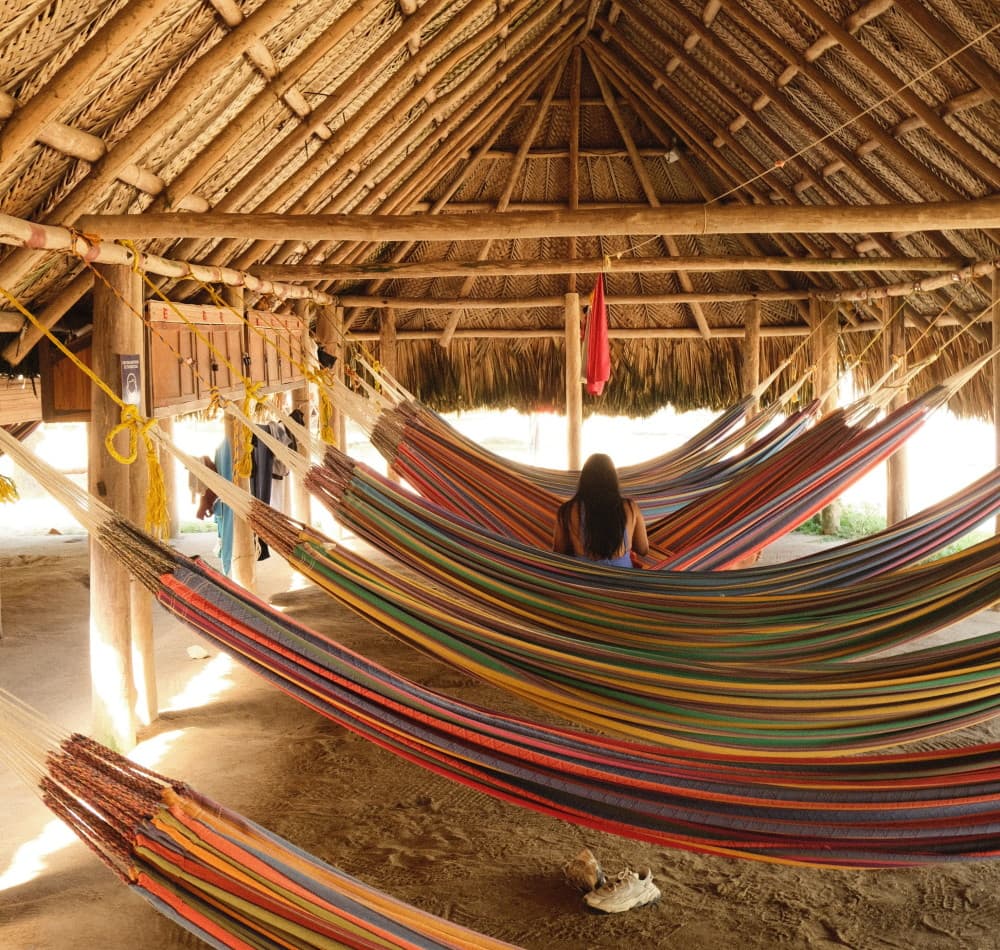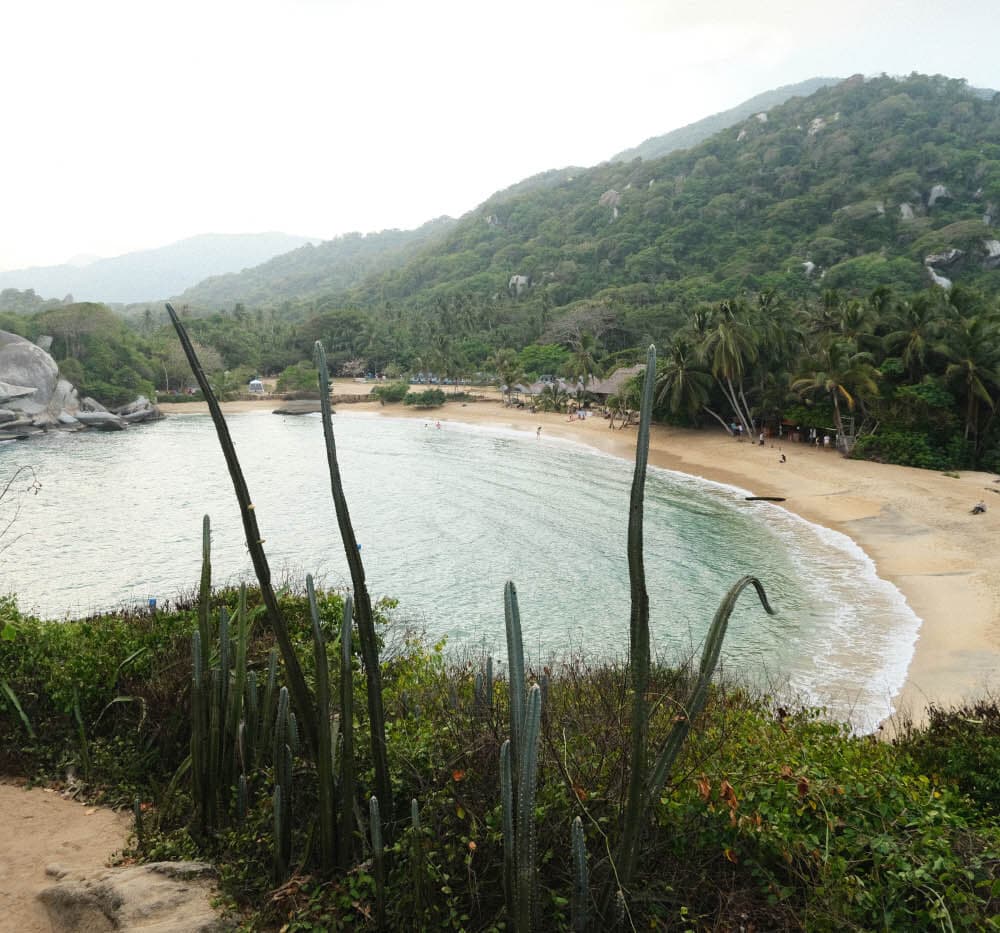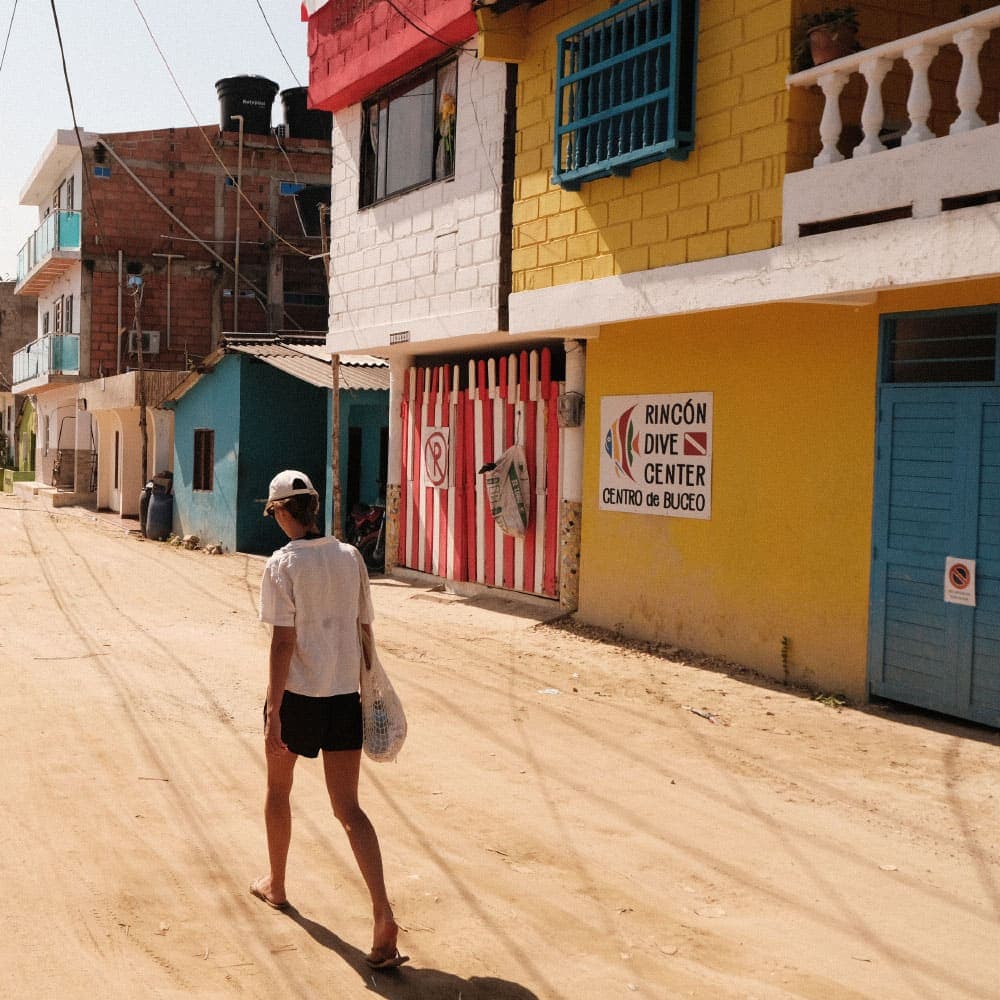Located 30 kilometres from the port city of Santa Marta, one of Colombia's most beautiful national parks stretches out. White dream beaches, untouched jungle, and a diverse wildlife make Tayrona National Park an unforgettable destination in northern Colombia. In this article, you will find everything you need to know before your visit to Tayrona National Park: from getting there to the best beaches, and important tips for a successful trip to this paradisiacal piece of nature.
Important Information:
The park closes several times a year to allow nature and wildlife to recover from tourism. You can find the exact closing times here: https://www.parquetayrona.com/en/ In 2024, the park will be closed from February 1st to February 15th, from June 1st to June 15th, and from October 19th to November 2nd.
Tayrona is a popular destination for tourists of all kinds, so it can be crowded at many points. Nevertheless, a visit is worthwhile due to the extraordinary beauty of the park. It is best to avoid weekends and holidays, as the crowds are particularly high during these times.
Tickets are purchased directly on-site, with a maximum number of visitors per day. It is advisable to arrive early to avoid long queues.
Accommodation options in camps are offered at the park entrance.
Due to currents, not all beaches in the park are suitable/allowed for swimming.
Even though we visited on a weekday, especially in the noon and early afternoon some paths were crowded.
Getting to Tayrona National Park:
The best starting points for a short journey are Santa Marta and Palomino.
You can take the bus, which will take you directly to the two entrances of Tayrona National Park. Choose the entrance that best suits your route (more information below) and buy your ticket directly on the bus.
Buses depart approximately every half hour from both Santa Marta and Palomino, often even more frequently, and the journey takes about an hour to the park. In Santa Marta, buses depart from the market square (Mercado Publico), and in Palomino, they depart from the main street opposite Tiendas D1. If you are in another location along the route, you can simply stand by the roadside and wave the bus down when it passes. Passengers are also picked up in this way. A single trip costs about 3-4 euros.
Tickets to Tayrona National Park:
The admission fee varies depending on the season. In 2024, it is 87,000 COP (~20 USD) during the high season or 73,500 COP during the low season for foreign tourists. This price is regardless of the length of stay in the park. If you leave the park and return the next day, you must pay the admission fee again.
Additionally, there is a mandatory insurance fee of 6,000 COP per day. Tickets are purchased directly on-site.
Your Route in the Park:
Depending on how much time you have, you can decide whether a day in the park is sufficient or if you want to plan an overnight stay in one of the camps. Most tourists take a day trip, starting at the Zaino entrance and following the path to Cabo San Juan Beach before returning the same way in the afternoon. This is the route to the most beautiful beaches, but also the most crowded.
For those who want to spend more time in nature and less time at the beach, returning through the Calabazo exit is an option.
Spending the night in Tayrona:
If you have a little more time, we recommend exploring the park over two days. There are several camps in the park where you can stay. If you stay outside the park, you will have to pay the entrance fee again the next day. We stayed in Cabo San Juan, which is located about halfway between the two entrances. Here, you can rent a tent or a hammock at the Zaino entrance, and online reservations are not possible.
These two days offer you ample time to explore all the beaches, take breaks at various stops, enjoy the park without the many day tourists, and start the return journey on the beautiful jungle trail the next day. Before our night in Cabo San Juan, we were a bit worried, as we had heard some mixed things about the camp. However, in the end, the hammock turned out to be surprisingly comfortable. It was also quiet, and we managed to get a good night's sleep and the beach is just beautiful.

We also passed by the camp at Playa Arrecife and were glad we hadn’t booked there. It’s not directly on the beach, and overall, the area around Cabo San Juan is a bit more scenic.
Map of the route:

All hiking trails are, in our opinion, easy to moderate. The return route to the Calabazo entrance is slightly steeper, but the jungle provides pleasant protection from the direct sun. We can't say if El Pueblito is worth it, as it was closed in the end of January due to some festivals of the town's residents. A bit after El Pueblito it is possible to take a moto taxi until the entrance Calabazo. We've decided to rather walk it and enjoy the small villages on the way.

Favourite beaches:
Actually all the beaches were really beautiful, our favourite ones however were the Piscina beach, because it was the least crowded one and also with Cabo San Juan the most beautiful one, which is the other beach we like the most.
Cabo San Juan was a bit more crowded in the afternoon, however in the morning of the second day it was totally fine. Also note that in both Piscina beach and Cabo San Juan it is possible to swim. That is not the case for every beach in Tayrona because some of them have strong currents and swimming is forbidden (See the map)
Things you shouldn't forget:
Passport
Cash
Mosquito repellent
Sunscreen
We've heard that proof of yellow fever vaccination may be required, but we didn't have to show it.
Conclusion on Tayrona National Park:
Although we usually prefer to avoid crowded tourist spots during our travels, we thoroughly enjoyed this park despite the large number of visitors. The beaches rank among the most beautiful we’ve seen in Colombia, and there’s plenty of space to retreat and enjoy the breathtaking scenery away from the crowds. Beyond the main hiking trails, you can find more secluded spots to escape and take in the natural beauty in peace. Also we really enjoyed the overnight stay in the hammock and would recommend staying 1 night, so that you can enjoy the more calm evening and morning at the beach.
The hiking trails also offer a great chance to encounter some of the park’s wildlife, including monkeys, lizards, and parrots.


